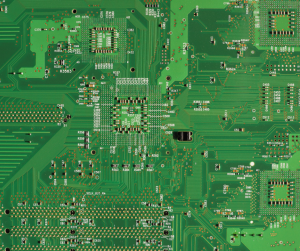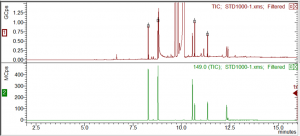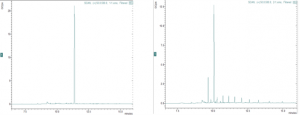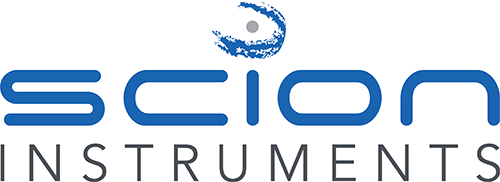Rapid Screening of Phthalates in Printed Circuit Boards using Pyrolysis GC-MS
 The purpose of this study is to determine the presence of Phthalates in Printed Circuit Boards (PCB) in compliance with IEC 62321-8:2017 using SCION 456-SQ with Pyrolyzer. This method can be used for rapid screening of the presence of phthalates in PCB with a simplified sample preparation method with higher repeatability.
The purpose of this study is to determine the presence of Phthalates in Printed Circuit Boards (PCB) in compliance with IEC 62321-8:2017 using SCION 456-SQ with Pyrolyzer. This method can be used for rapid screening of the presence of phthalates in PCB with a simplified sample preparation method with higher repeatability.
Phthalates are often used to make plastics soft. It has long been identified as endocrine disruptors, changing the reactions of hormones in the body and affect development. Specifically, the most recent study found that phthalates produce a syndrome of abnormalities in male offspring when administered to pregnant rats during the later stages of pregnancy.
The European Union issued Directive (EU) 2015/863 in the official gazette on June 4, 2015, which included (2-Ethylhexyl) Phthalate (DEHP), Benzyl Butyl Phthalate (BBP), and Dibutyl Phthalate (DBP) and Diisobutyl Phthalate (DIBP) are listed in Annex II. The limits of the above four phthalates are set to 0.1% (1000ppm). (EU) The transition period given by 2015/863: All electronic and electrical products (except medical equipment and monitoring equipment) must meet the new requirements from July 22, 2019. Medical equipment and monitoring equipment must meet the new requirements from July 22, 2021.
Besides the EU, many other countries also have similar regulations to EU directives to control their products on sale. Therefore, the compliance of RoHS regulations has a significant impact on electrical and electronic manufacturing industry. SCION provides a solution according to IEC62321-8 standard method, using a GC-MS equipped with a pyrolyzer (Py-TD-GC-MS) to detect the phthalates in the regulated products to see if they meet the requirements of EU 2015/863.
Experimental
PVC Reference Standards were obtained as per table 1, with Phthalate concentrations around 1000 mg/kg +/- 10%. Two unknown samples were also obtained for analysis.
A Precisa ES125SM Semi-Micro Balance was used to accurately weigh solid samples for pyrolysis.
Instrumental Conditions for Py-GC-MS are listed in Table 2.
| Name | CAS # | Certified value (mg/kg) | Expanded Uncertainty (mg/kg)(k=2) |
| DIBP | 84-69-5 | 975 | 98 |
| DBP | 84-74-2 | 1012 | 101 |
| DnHP | 84-75-3 | 1079 | 108 |
| BBP | 85-68-7 | 977 | 98 |
| DEHP | 117-81-7 | 1212 | 121 |
| DNOP | 117-84-0 | 1099 | 110 |
Table 1. PVC Reference Material
| Pyrolizer | Single Shot Frontier Lab Pyrolizer
Furnace: 200°C, 20°C/min to 300°C, 5°C/min to 340°, hold 5 min. Interface: 300°C |
| GC | SCION 456-GC-SQ with S/SL inlet,
Column: SCION-5MS 30m*0.25mm*0.5µm S/SL: 320°C, split50:1 Carrier: He 1 ml/min constant linear velocity OvenProgram: 80°C, 20°C/min to 300°C hold 5 min. |
| MS | SCION 456-GC-SQ with S/SL inlet,
Ion Source: 230°C, 70 eV Scan Mode: Full Scan 50-500 amu Solvent delay: 2 mins Transfer line: 280°C |
Table 2. Instrumental Conditions
Results
The standard combustion cup was placed into the manual sampler of the Pyrolyzer. When the GC-MS and Pyrolyzer reached the set condition, the manual sampler dropped the combustion cup into the chamber and started the analysis.
Figure 1 shows the Total Ion Chromatogram (TIC) and the Extracted Ion Chromatogram (EIC) for m/z 149 of the PVC standard.

Figure 1. TIC and Extracted Ion Chromatograms (m/z 149) for Standard
From the EIC chromatogram for m/z 149, which is considered as the characteristic ion of phthalates, it can be seen that all 6 phthalate target compounds have been separated effectively. The 4 phthalates listed in EU 2015/963 were easily identified from the NIST library search result, as listed in table 3 below.
| Name | CAS # | RT(min) |
| DIBP | 84-69-5 | 8.285 |
| DBP | 84-74-2 | 8.789 |
| BBP | 85-68-7 | 10.687 |
| DEHP | 117-81-7 | 11.356 |
Table 3. Target Compounds per EU 2015/963 ROHS reference
Figure 2 shows the Total Ion Chromatogram (TIC) the two unknowns, sample 1 (left) and sample 2 (right). Concentrations were calculated (Table 4).
From the data, it can be seen that there is a high concentration of DEHP present in Unknown sample 1, and only a small amount of DEHP present in Unknown sample 2.

Figure 2. TIC Chromatograms (m/z 149) for Unknown samples 1 (left) and 2 (right).
| Name | Mass(mg) | Number | Compound | Retention time(min) | Peak area | Concentration(mg/kg) |
| PVC standard | 0.50 | STD1000-1 | DBP/223 | 8.285 | 1.949×107 | 1012 |
| DIBP/223 | 8.788 | 1.801×107 | 975 | |||
| BBP/206 | 10.687 | 2.426×107 | 977 | |||
| DEHP/279 | 11.355 | 9.942×106 | 1212 | |||
| Unknown 1 | 0.51 | 1-1 | DBP/223 | — | — | ND |
| DIBP/223 | 8.787 | 252450 | 13.4 | |||
| BBP/206 | — | — | ND | |||
| DEHP/279 | 11.387 | 1.137×109 | 135891 | |||
| Unknown 2 | 0.58 | 2-1 | DBP/223 | — | — | ND |
| DIBP/223 | — | — | ND | |||
| BBP/206 | — | — | ND | |||
| DEHP/279 | 11.355 | 181070 | 19 |
Table 4. Target Compounds per EU 2015/963 ROHS reference
Conclusion
SCION GC-MS with Pyrolyzer is an effective method for rapid screening of the presence of phthalate substances (DIBP, DBP, BBP, DEHP) in Printed Circuit Boards.
The sample preparation is much simpler and faster than the conventional solvent extraction method, and the entire analysis process only takes only 15 minutes. As this method uses a very simple single-point quantitative method with small sampling size, a representative or homogenized sample must be used.
In summary, SCION GC-MS with Pyrolysis is a very suitable rapid screening method for phthalates in PCB.
References
IEC 62321-8:2017 Determination of certain substances in electrotechnical products – Part 8: Phthalates in polymers by gas chromatography-mass spectrometry (GC-MS), gas chromatography-mass spectrometry using a pyrolyzer/thermal desorption accessory (Py-TD-GC-MS).
Download the Application Note
Download the complete Application Note: Rapid Screening of Phthalates in Printed Circuit Boards using Pyrolysis GC-MS
Keep in Touch
If you wish to speak to a member of our team about more information, please don’t hesitate to contact us. Or if you wish to keep up to date with SCION Instruments latest research and articles, why not join us on social media and sign up to our newsletters today?
